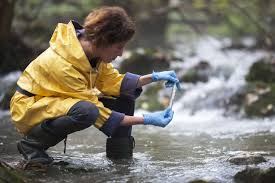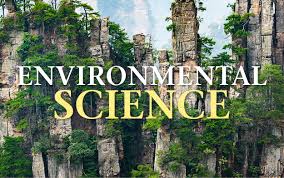Environmental science is a multidisciplinary field of study that focuses on understanding the natural environment, the interactions between living organisms and their surroundings, and the impact of human activities on ecosystems and the planet.
It combines knowledge from various sciences such as biology, chemistry, geology, and sociology to address environmental issues, conservation, and sustainability.
Our world is a complex and beautiful place, full of diverse ecosystems, breathtaking landscapes, and a rich tapestry of life. But it’s also facing significant challenges due to human activities. This is where environmental science comes into play, it helps us comprehend, protect, and preserve the natural world we depend on.
What is Environmental Science?
Environmental science is like a detective story. It seeks to unravel the mysteries of how our planet works and how human actions impact it. It’s not just one subject; it’s a mix of biology, chemistry, geology, physics, and even sociology. Imagine it as a giant puzzle where each piece represents a different aspect of our environment.
The Three Pillars of Environmental Science
1. Understanding Nature: Environmental scientists study how the Earth’s systems function. This includes learning about weather patterns, ocean currents, ecosystems, and the behavior of animals and plants. By understanding these natural processes, we can predict things like climate change or the effects of pollution.
2. Human Impact: We humans are a powerful force on this planet. Environmental science looks at how our activities, from building cities to burning fossil fuels, affect the environment. This knowledge helps us find ways to reduce our negative impact and live more sustainably.
3. Solutions and Conservation: Environmental science doesn’t just point out problems; it also offers solutions. Conservationists work to protect endangered species and preserve vital ecosystems. Engineers design cleaner technologies and renewable energy sources to reduce pollution and combat climate change.
Real-World Examples
1. Climate Change: Environmental science has played a crucial role in understanding the causes and consequences of climate change. By studying greenhouse gasses, temperature records, and ice cores, scientists have shown how human activities are altering our climate.
2. Biodiversity Conservation: Many species are threatened by habitat loss and pollution. Environmental scientists work tirelessly to protect endangered animals and restore their habitats, like the efforts to save the giant panda or the African elephant.
3. Clean Energy: The development of wind, solar, and hydroelectric power is a direct result of environmental science. These clean energy sources aim to reduce our reliance on fossil fuels and combat air pollution.
Why Environmental Science Matters
1. Sustainability: We’re using Earth’s resources faster than they can regenerate. Environmental science helps us find ways to live sustainably, ensuring that future generations can enjoy clean air, water, and a healthy planet.
2. Health: Our environment directly impacts our health. Clean air and water, safe food, and green spaces all contribute to our well-being. Environmental science strives to protect these essentials.
3. Economic Value: Natural resources like forests, fisheries, and fertile soil are essential for our economy. Environmental science helps us manage these resources wisely, ensuring their long-term viability.
Environmental science is like a compass guiding us through the challenges our planet faces. It empowers us to make informed decisions, preserve our natural wonders, and create a better future for all living beings on Earth.
Read Also: Used Cans Recycling Process Complete Guide
The Importance of Environmental Science

Our world is a remarkable place, filled with stunning landscapes, vibrant ecosystems, and the incredible diversity of life. Yet, it’s also a world facing pressing issues due to human actions. This is where environmental science steps in, it helps us understand, safeguard, and cherish the natural world we rely on.
What is Environmental Science?
Think of environmental science as an intriguing puzzle. It’s not just one subject; it’s a blend of biology, chemistry, geology, physics, and more. Its mission is to solve the mysteries of our planet, from how it functions to how our actions affect it.
Why Environmental Science is Important
1. Sustainability: We’re consuming Earth’s resources faster than they can replenish. Environmental science shows us how to live sustainably, ensuring a clean environment, clean water, and a thriving planet for generations to come.
2. Health: Our environment directly affects our health. Clean air, safe food, and green spaces contribute to our well-being. Environmental science strives to safeguard these essentials.
3. Economic Value: Natural resources like forests and fisheries are vital for our economy. Environmental science helps us manage these resources wisely, ensuring their long-term health.
Environmental science is like a compass guiding us through Earth’s challenges. It equips us with knowledge to make wise choices, safeguard our natural wonders, and create a brighter future for all who call this planet home.
Read Also: Best Ways to Dispose Used Can Wastes Properly
Exploring Environmental Science

Environmental science is like an intricate puzzle made up of various pieces, each essential to understand the world around us. In simple terms, it’s the study of our environment, the impact of human activities on it, and how we can protect it. Let’s break down the main components of this fascinating field:
1. Earth’s Systems: Imagine the Earth as a giant engine with many moving parts. Environmental scientists study these systems, including the atmosphere (air), hydrosphere (water), lithosphere (land), and biosphere (life). They explore how these components interact, such as how the ocean influences weather patterns.
2. Biology and Ecology: This part focuses on living things and their habitats. It helps us understand the diversity of life on Earth, from tiny microorganisms to majestic forests. Ecology, a big part of this, explores how species interact with each other and their surroundings.
3. Chemistry: Chemistry plays a vital role in environmental science. It helps us analyze pollutants in air and water, study chemical reactions in the environment, and develop ways to clean up pollution.
4. Geology: Geology digs into the Earth’s structure and history. It tells us about the formation of mountains, earthquakes, and even how rocks influence soil and landscapes.
5. Physics: Physics comes in when we study natural phenomena, like how energy from the sun drives our climate or how water moves through the atmosphere and the Earth’s surface.
6. Human Impact: This component focuses on the influence of human activities on the environment. It includes topics like pollution (air, water, soil), deforestation, urbanization, and the management of natural resources.
7. Conservation and Sustainability: Environmental science isn’t just about identifying problems; it’s also about finding solutions. Conservation efforts aim to protect endangered species and preserve ecosystems. Sustainability focuses on using resources wisely to ensure a healthy planet for the future.
8. Social Sciences: Understanding human behavior and society’s role in environmental issues is crucial. Social sciences like sociology and economics help us explore why people make certain choices regarding the environment and how policies can encourage better practices.
9. Policy and Law: Laws and regulations play a significant role in environmental protection. This aspect of environmental science examines the creation and enforcement of environmental policies at local, national, and global levels.
10. Technology and Innovation: Innovative technologies are vital for solving environmental challenges. Scientists and engineers work together to create new ways to reduce pollution, generate clean energy, and monitor the environment.
Environmental science helps us make informed decisions about how to protect our planet and its inhabitants. It empowers us to find solutions to environmental problems, promote sustainability, and ensure that future generations inherit a healthy and vibrant Earth.
In a nutshell, environmental science is like a comprehensive guide to understanding and preserving our environment. By studying its various components, we gain insights into the intricate web of life on Earth and learn how to be better stewards of our home.
Read Also: A Beginner’s Guide to the DIY Cornhole

